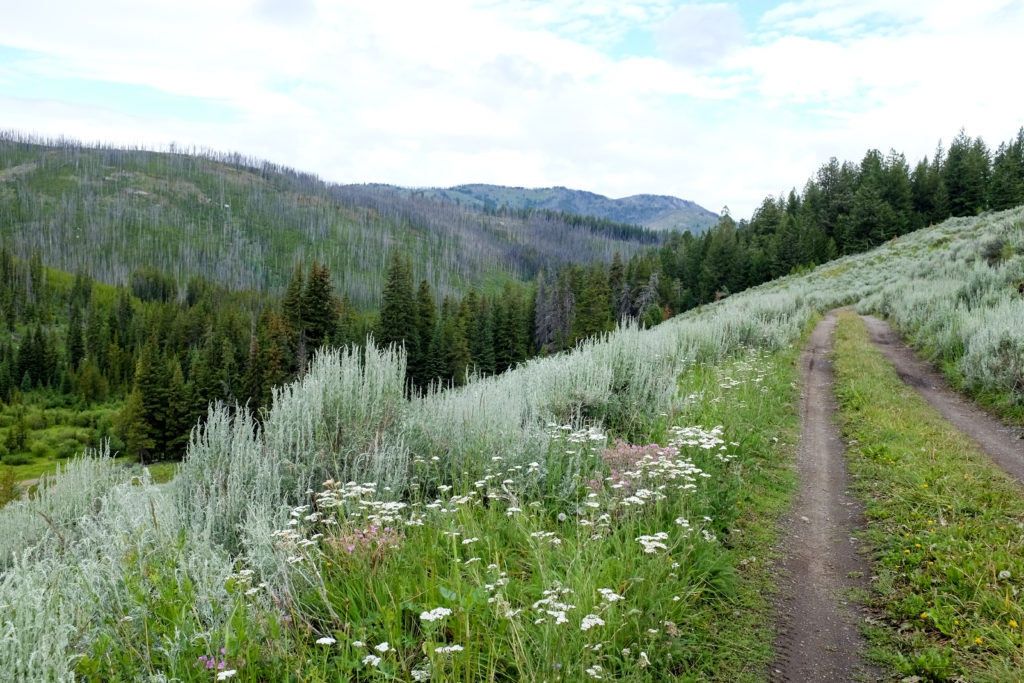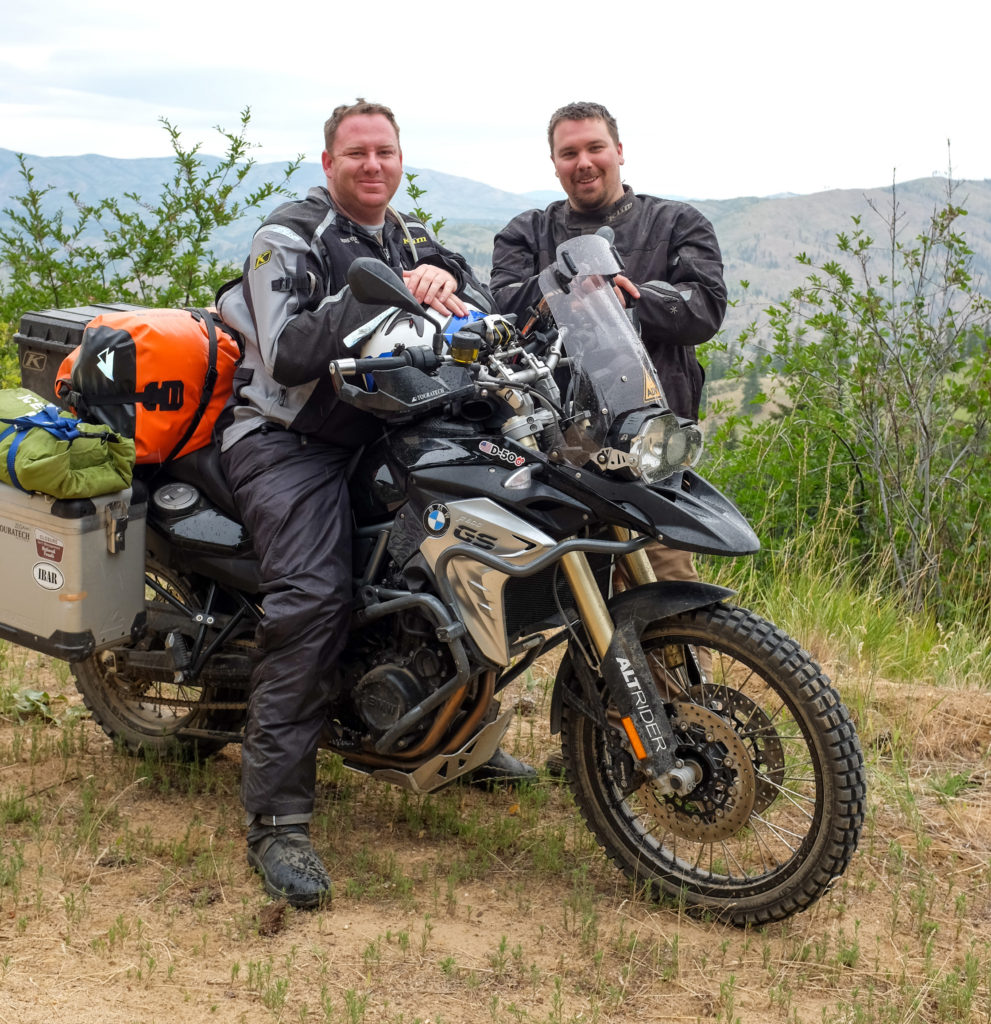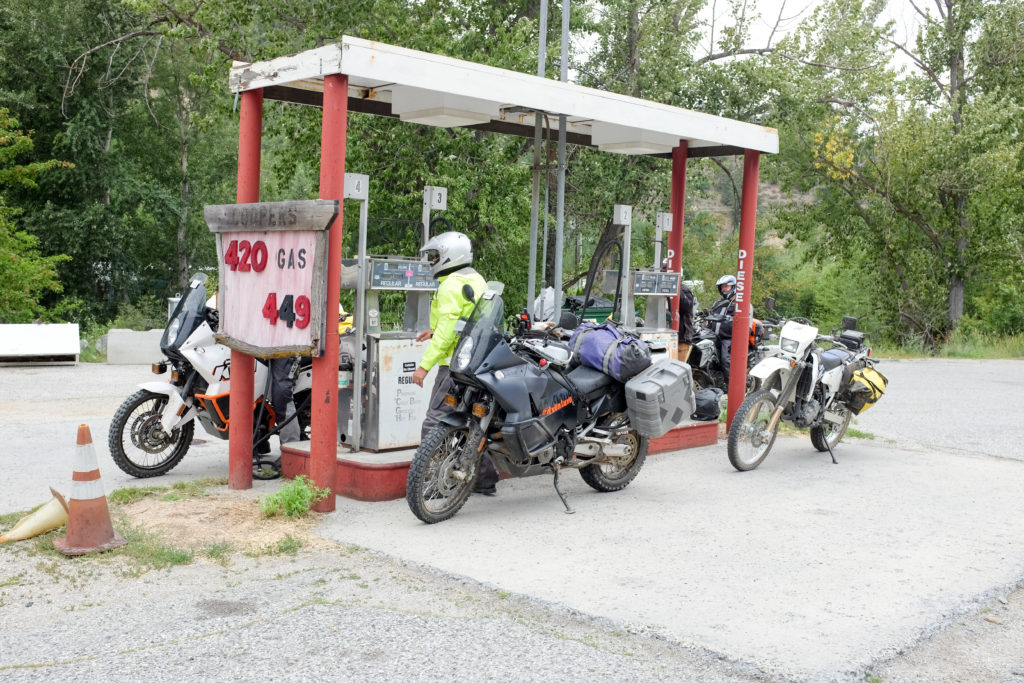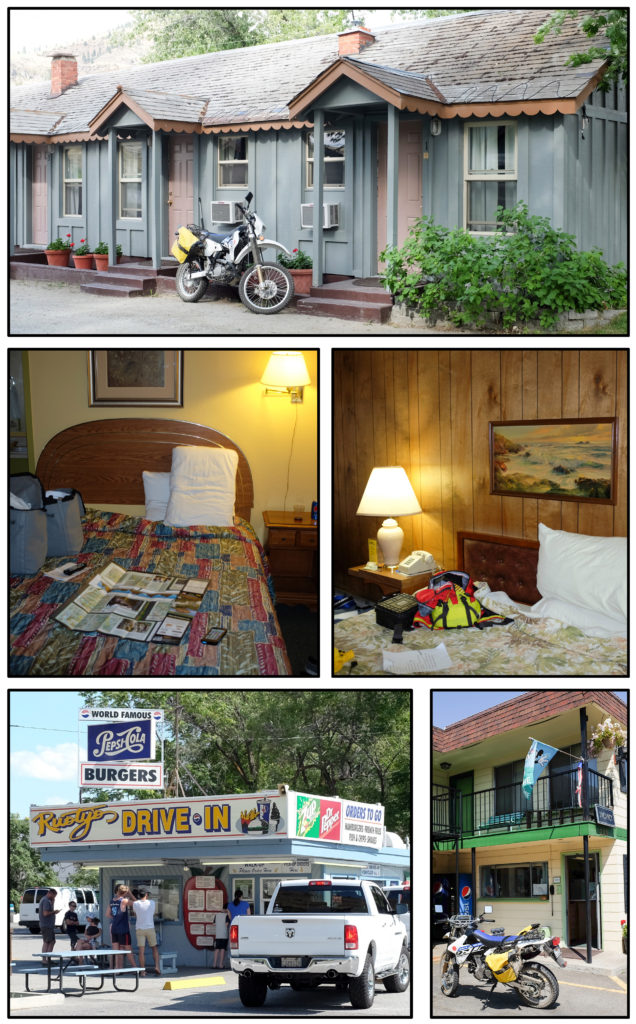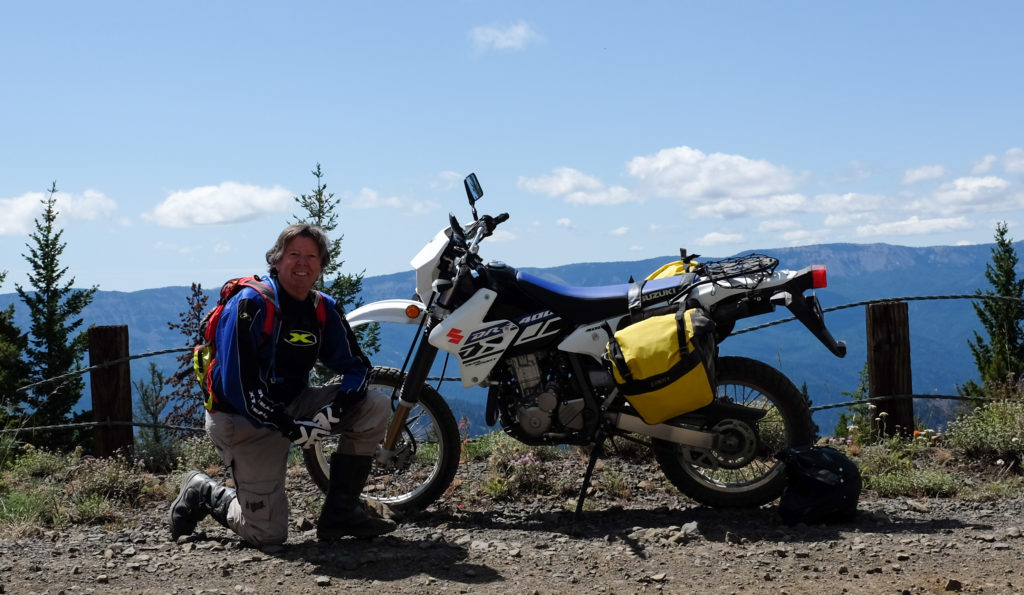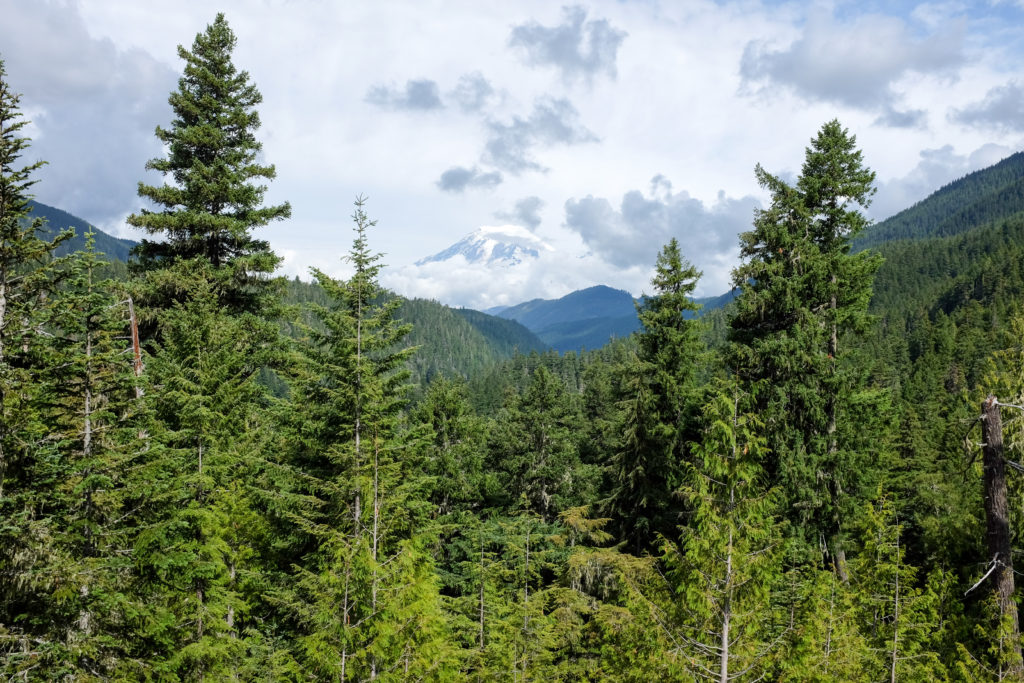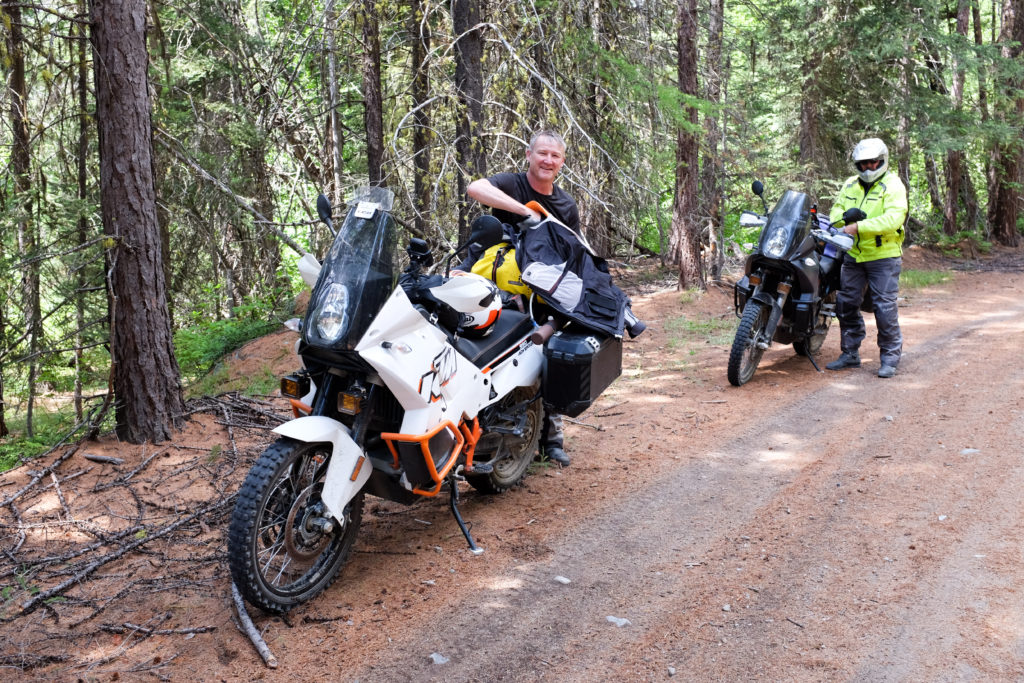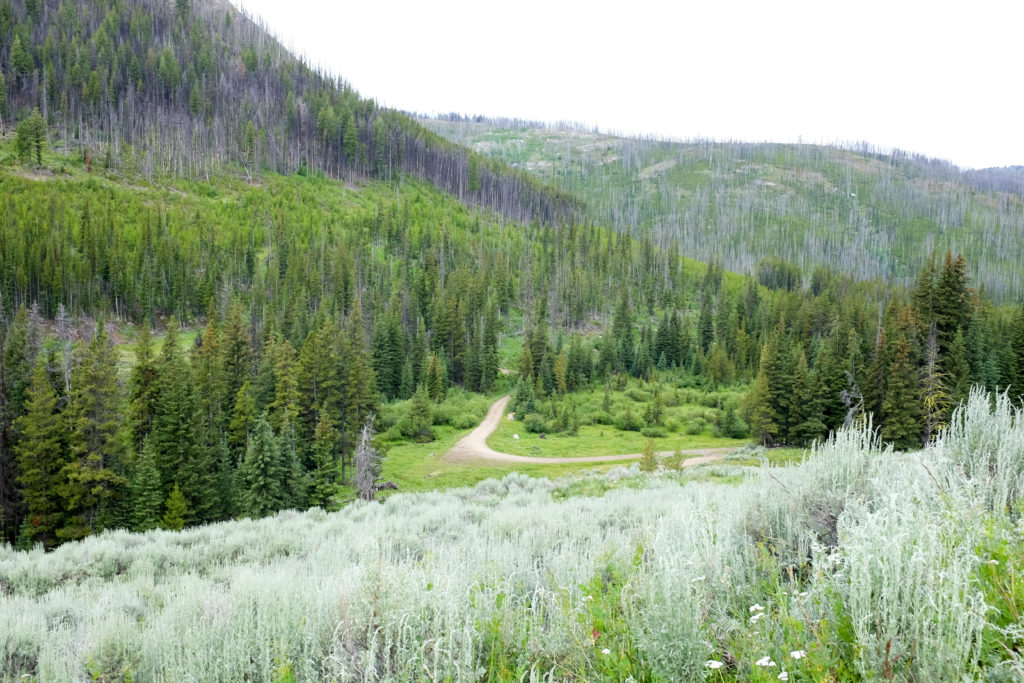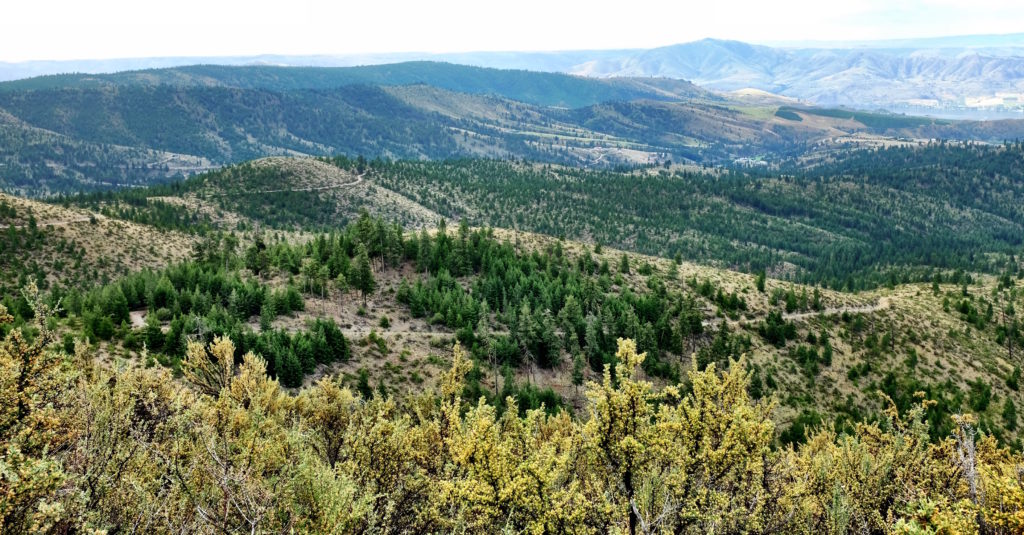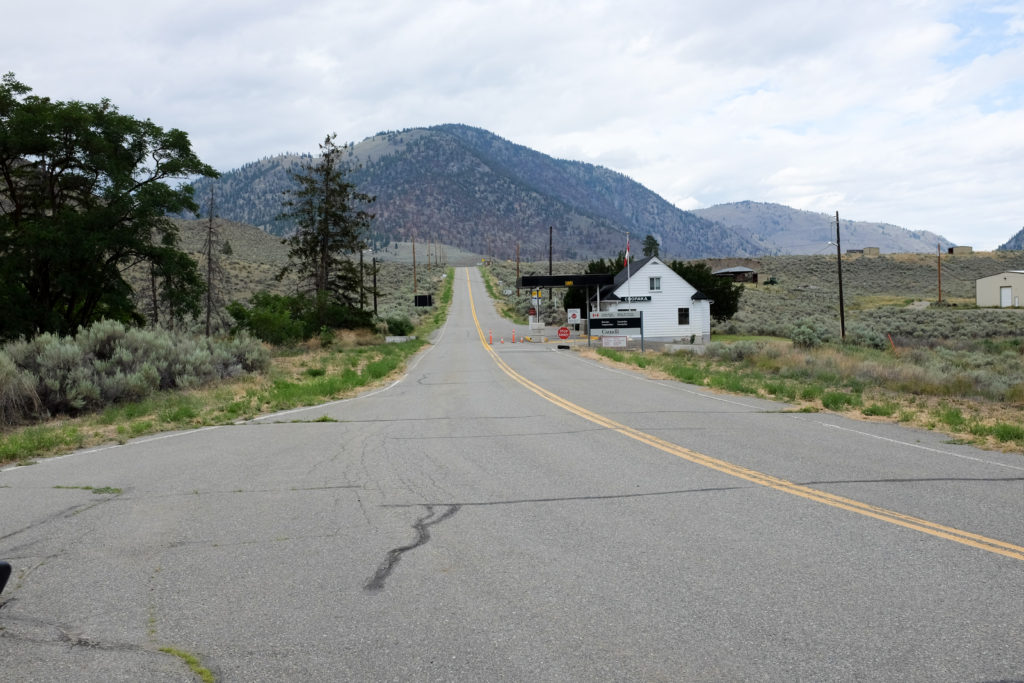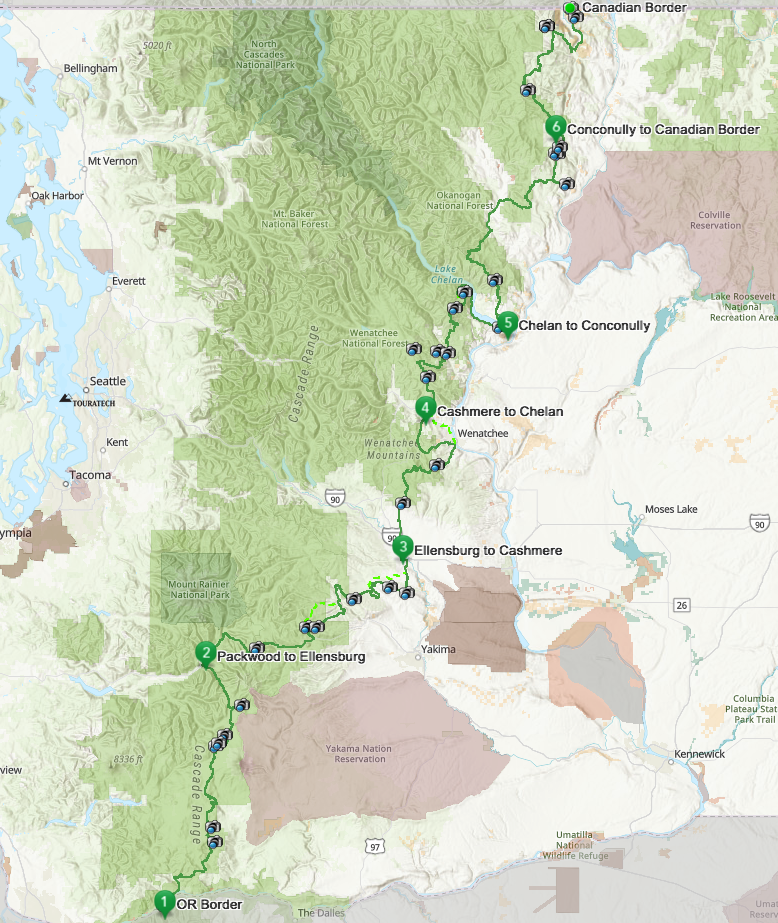I intend (hope and dream) to ride all or part of the TransAmerica Trail in 2020, but what would be the best bike? While Husqvarna and KTM offer high-performance, dual-sport bikes, they require race-bike-level maintenance and would need expensive suspension mods to get the saddle down to a manageable height. I didn’t want the weight and complexity of bikes like the BMW R 1250 GS Adventure or the KTM 1290 Super Adventure R. I needed something easy to maintain, comfortable to ride and light enough to pick it up if I tip over. My choice ended up being a 2019 Suzuki DR-Z400S that I purchased from Chaparral Motorsports.
The TransAmerica Trail (TAT) is a big commitment so it makes sense to try a few shakedown runs before attempting the big one. The Washington Backcountry Discovery Route (WA BDR) seemed a logical choice to get a feel for what may be the challenges of riding the TAT.
SIX STAGES FROM BORDER TO BORDER
The WA BDR is a little under 600 miles that starts on the Columbia River in Stevenson, Washington, and snakes its way to the secluded Canadian border crossing of Night Hawk (this busy crossing averages one car per hour). The route is broken into six days (or what I called “stages”) with most stages ending near a town with food and lodging. The vast majority of the route is on unpaved roads. My little DR-Z proved to be the perfect choice. It handled a slide area without breaking a sweat (a guy on a large adventure bike wouldn’t attempt the crossing) and motored up a loose rocky section that I had been warned about by other riders.
ANALOG VERSUS DIGITAL
I was determined to navigate the route with nothing more than a Butler Motorcycle Map. Big mistake. Once on the route, a number of things became clear; People love to vandalize National Forest Road signage, foliage grows over National Forest Road signs and there are hundreds of intersections that don’t have any signage. It was common to ride up to an intersection of three to five trail options, with none of them marked. Yes, I took a few wrong turns. The map helps keep you pointed in the right direction (or can get you back on track when turned around), but a rider needs a route-loaded GPS to make all the right turns. After doubling the mileage of stage 1 due to taking wrong turns, it was clear a GPS would have been a welcomed addition.
THE CAMARADERIE
The WA BDR is something that needs to be shared. A few friends who had planned to ride with me had to bail so I reluctantly ventured out alone. While it was not uncommon to ride for hours without seeing anyone, there were a few times when I bumped into riders and 4×4 drivers along the route (and you could always meet others in towns at the end of the stages).
The riders I met were super helpful who invited and encouraged me to ride along with them. By the way, they all had GPS units. Sharing the views, the awesome roads and not making wrong turns made the company of others a real plus.
BACK TO THE BEGINNING
The way I attacked the WA BDR was to haul my bike to Stevenson, Washington, leave the truck at a hotel (the awesome Carson Ridge Luxury Cabins), ride the six stages and then take a few days to ride back to Stevenson on paved roadways. The ride back was the least enjoyable part of the trip. After six days of riding almost solo, sharing the road with minivans, pickups and semi trucks was a rude awakening. And the high winds around Ellensburg, Washington, produced the most challenging riding conditions of the adventure.
If the DR-Z had a GPS, I would have considered riding the route backwards and avoiding the highways completely.
HIGHLY RECOMMENDED
There are 10 Backcountry Discovery Routes (and more in development) and after completing the Washington route, I can’t wait to ride a bunch more. If you enjoy getting away from the crowds and love riding (or driving) off-road, I highly recommend trying the WA BDR.
